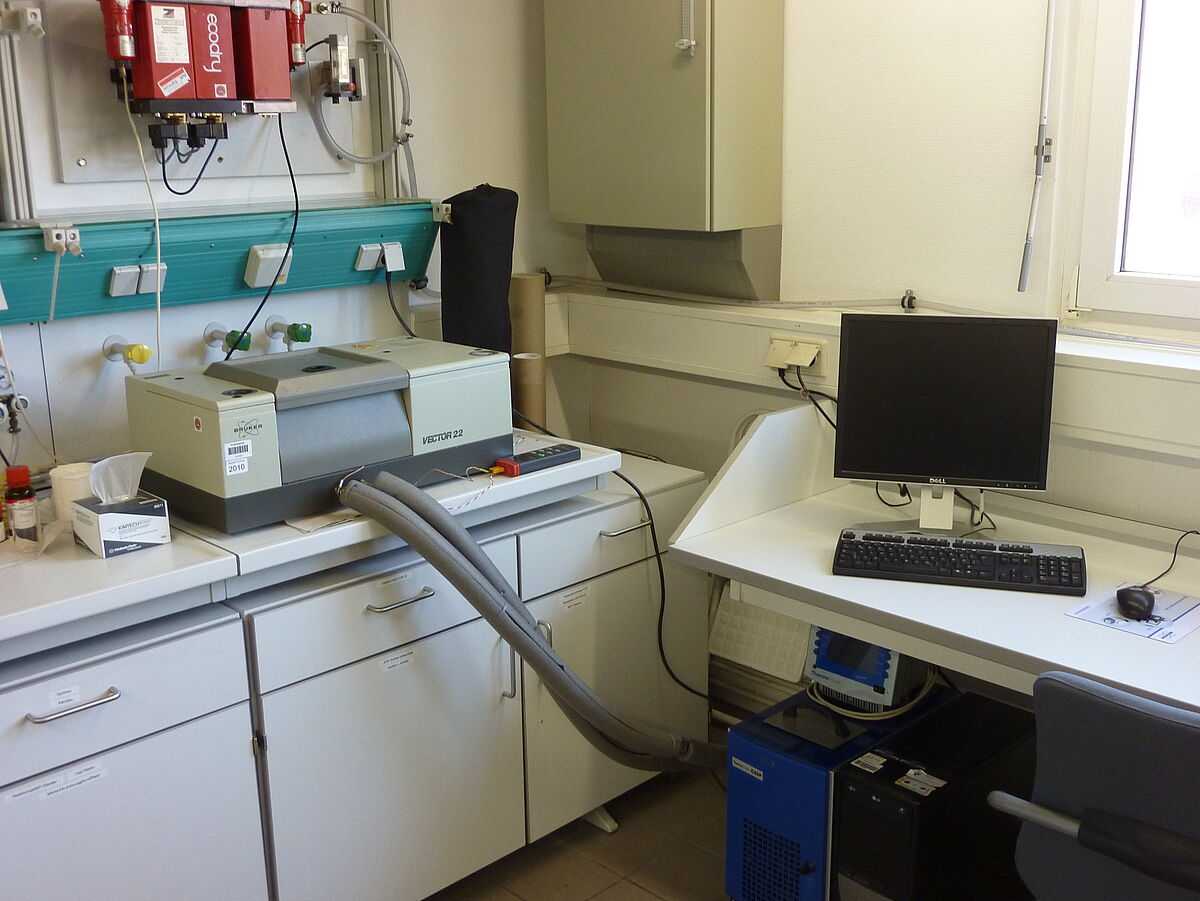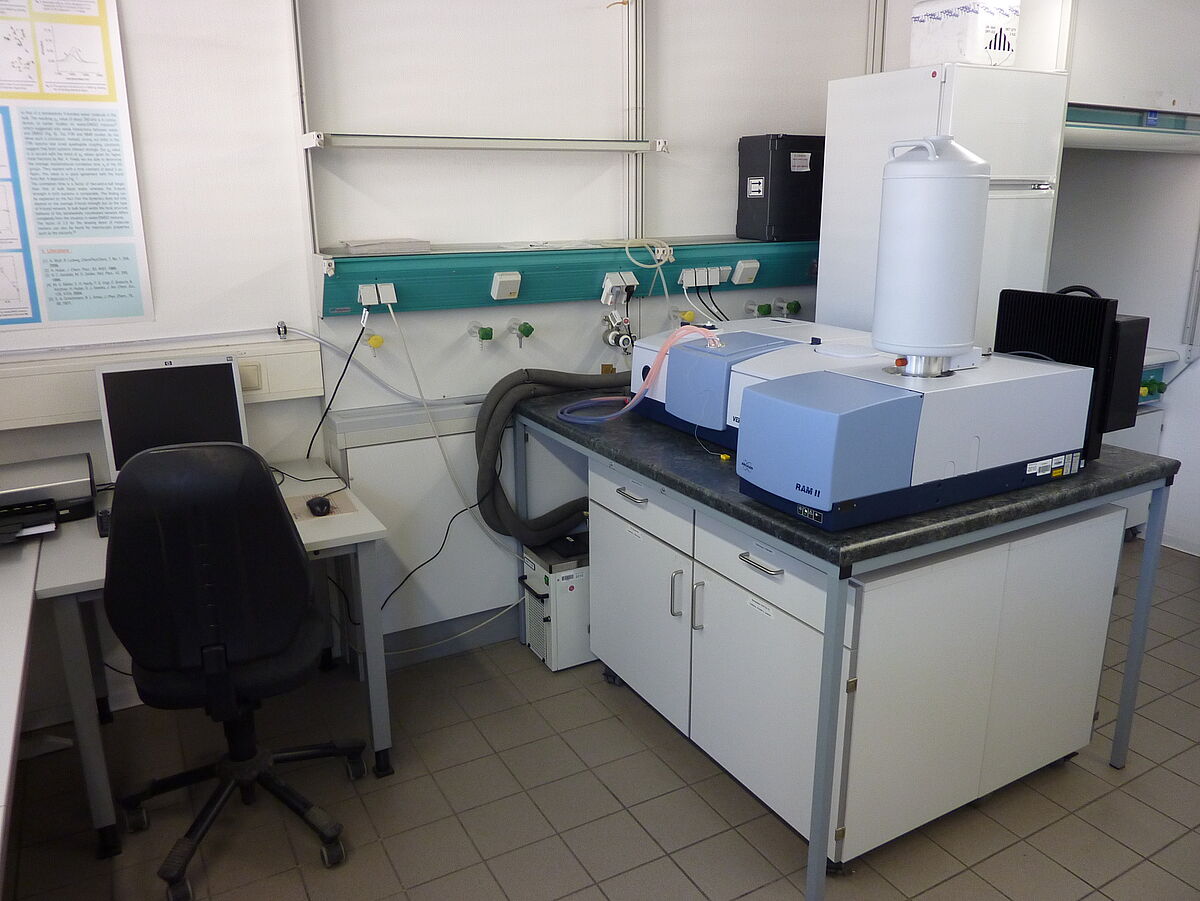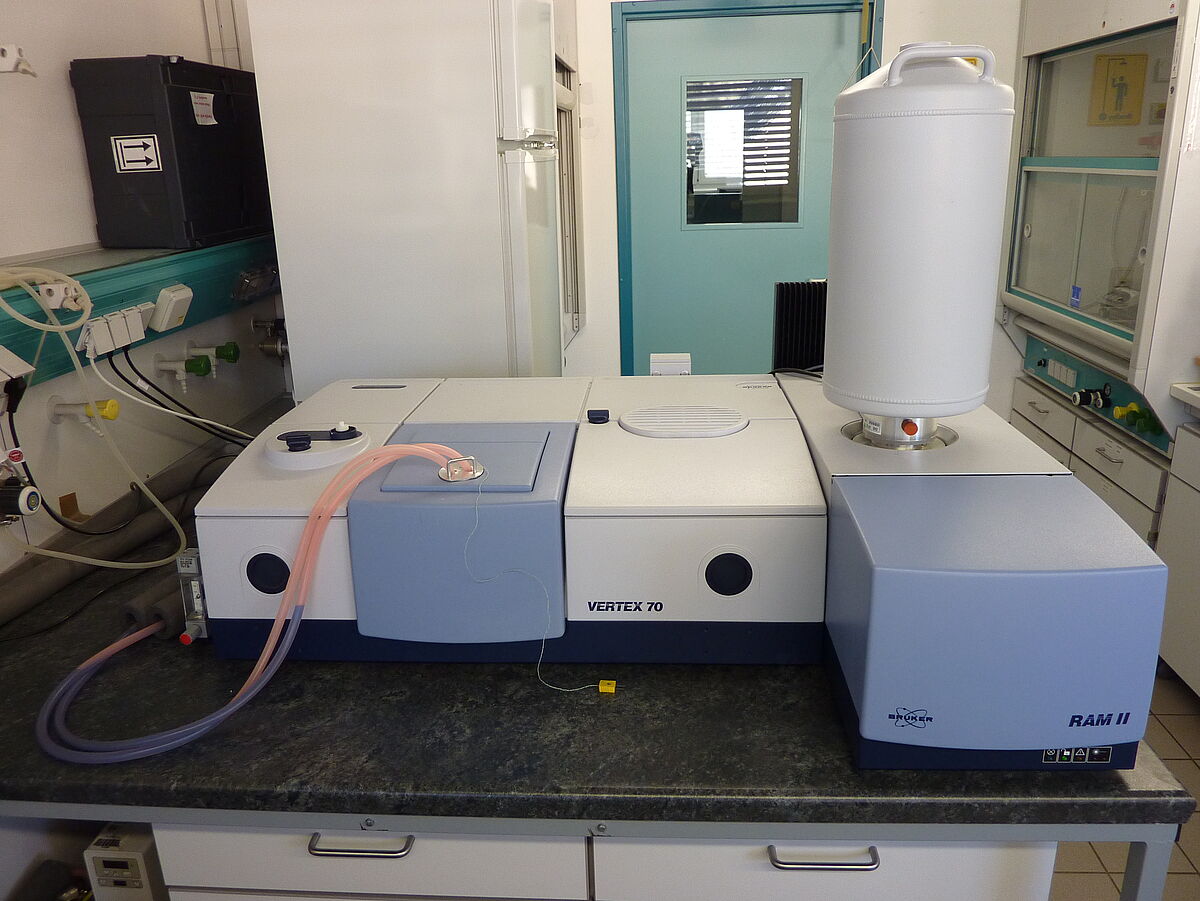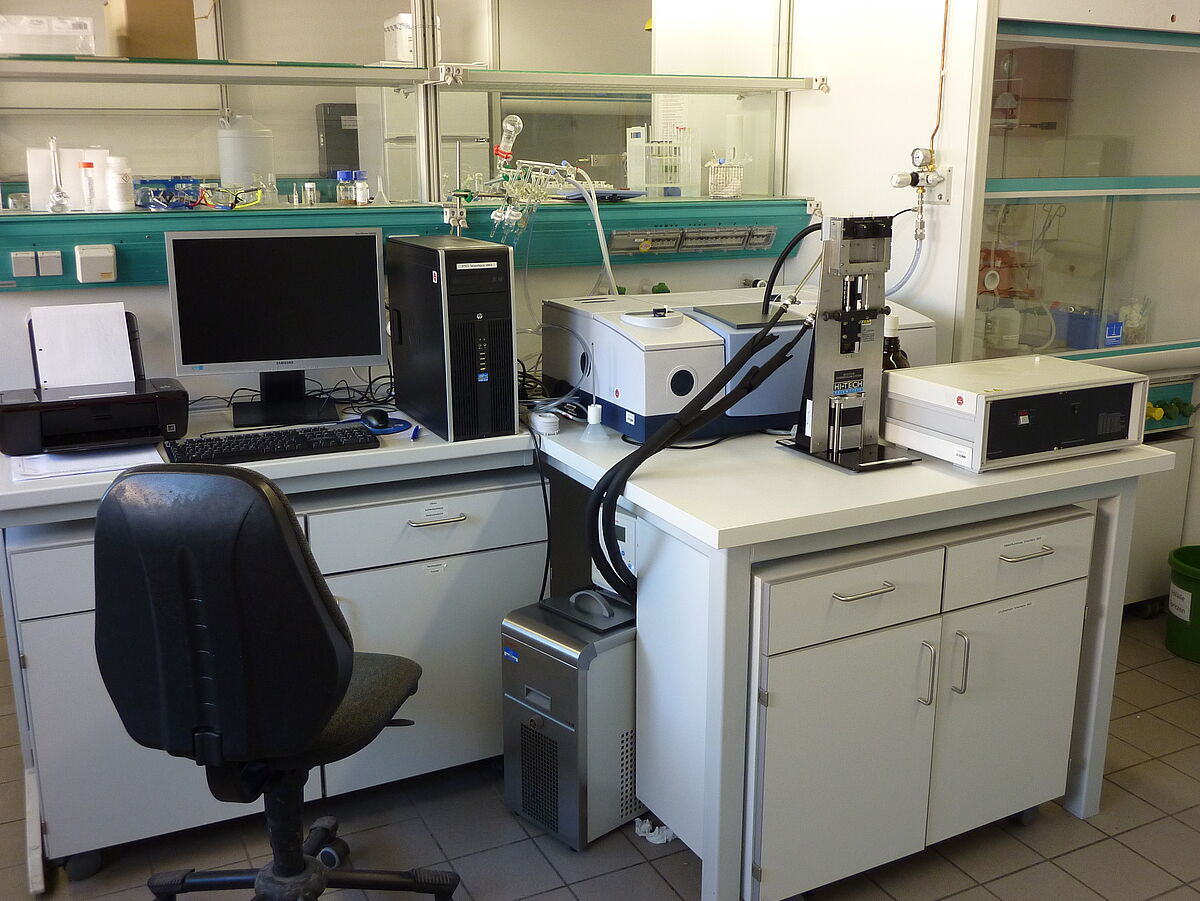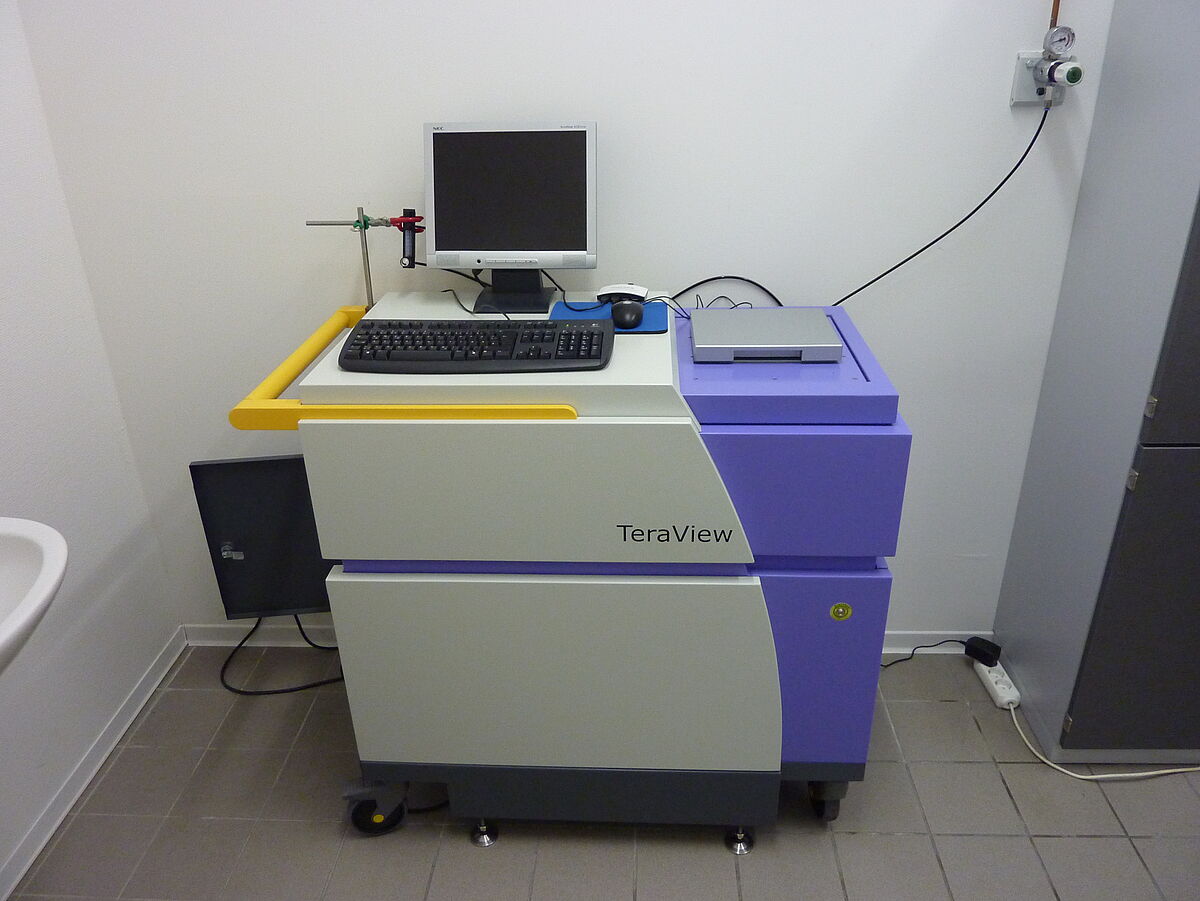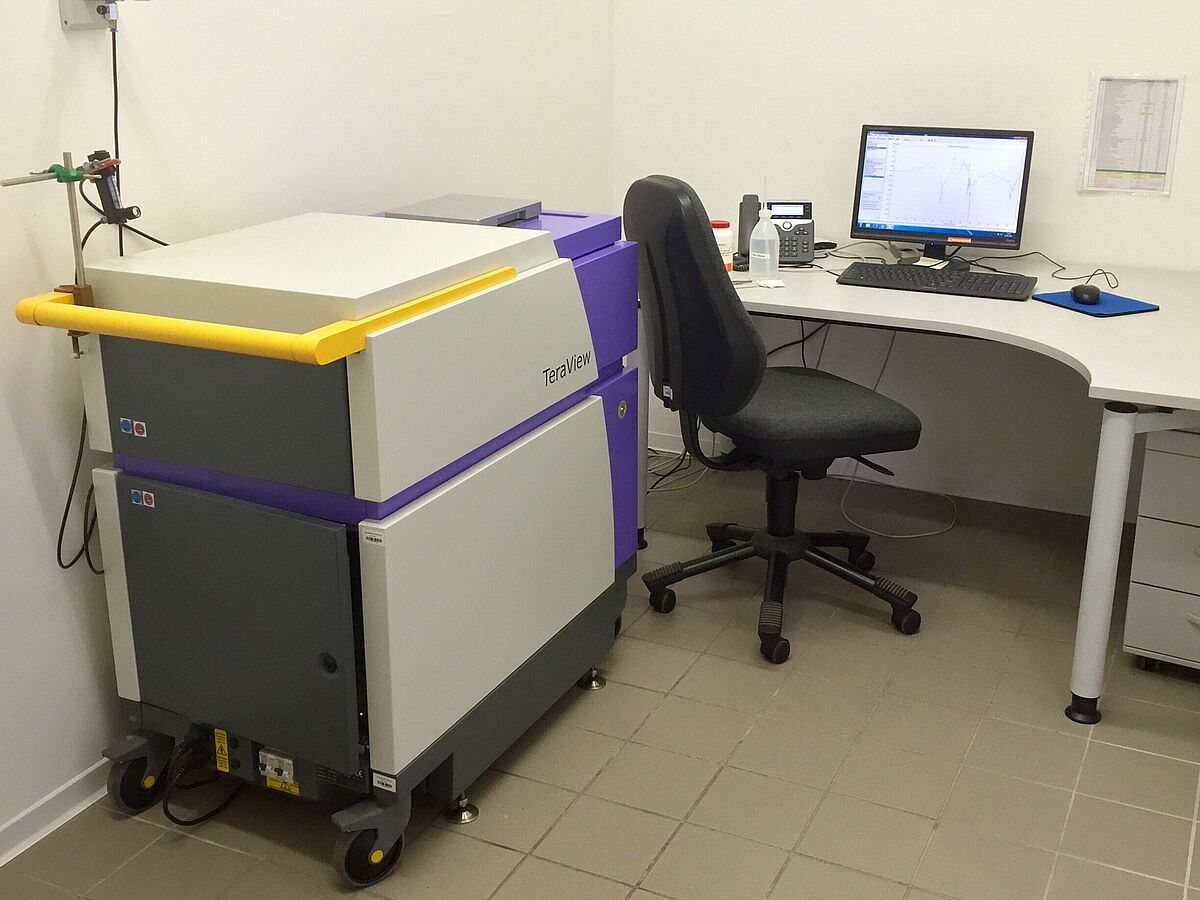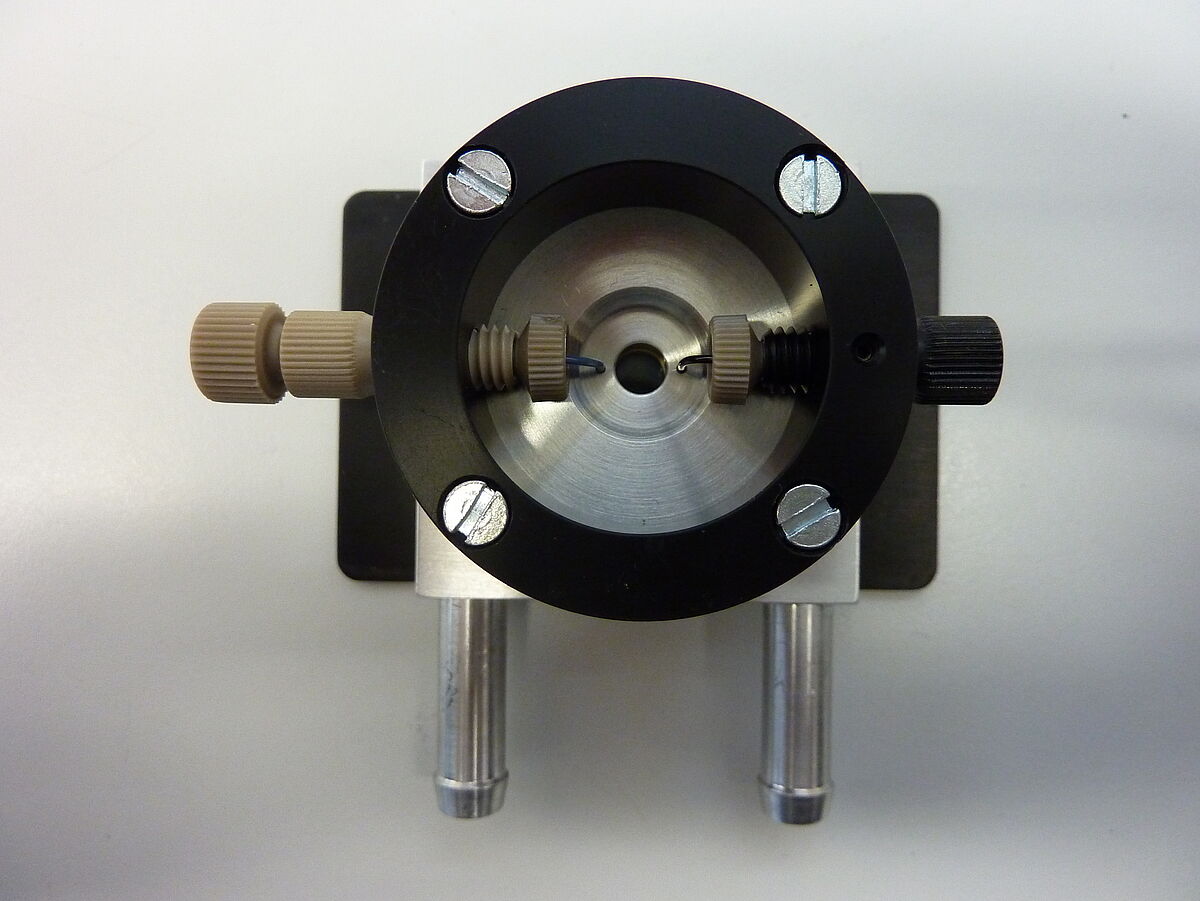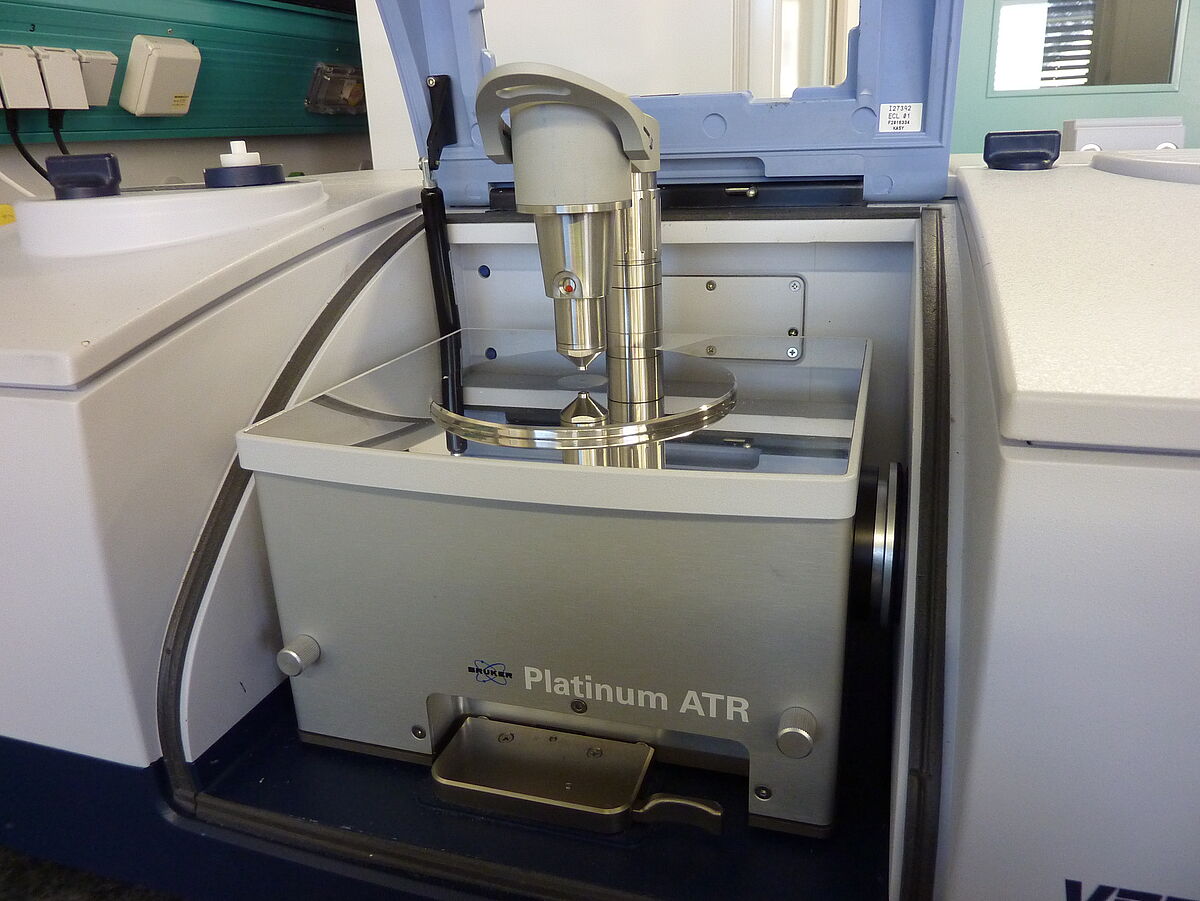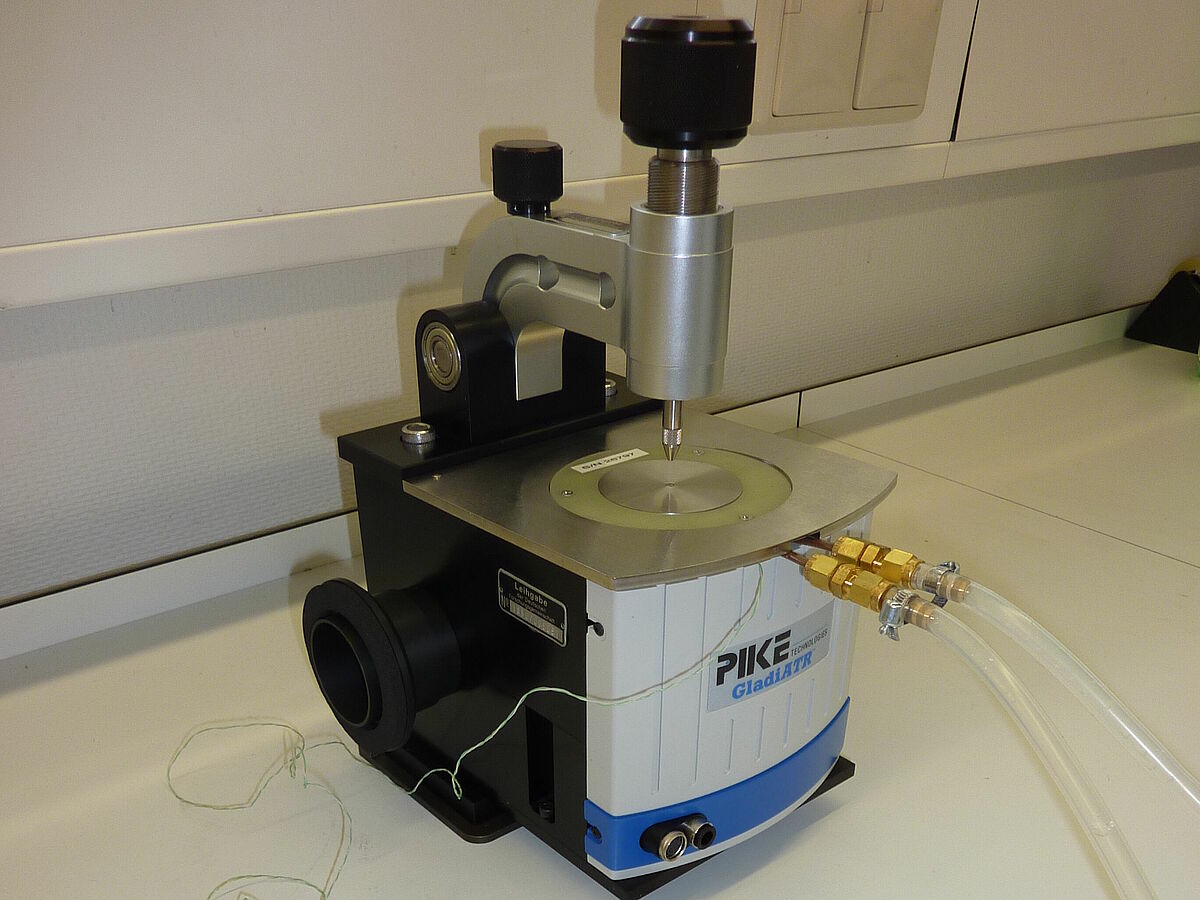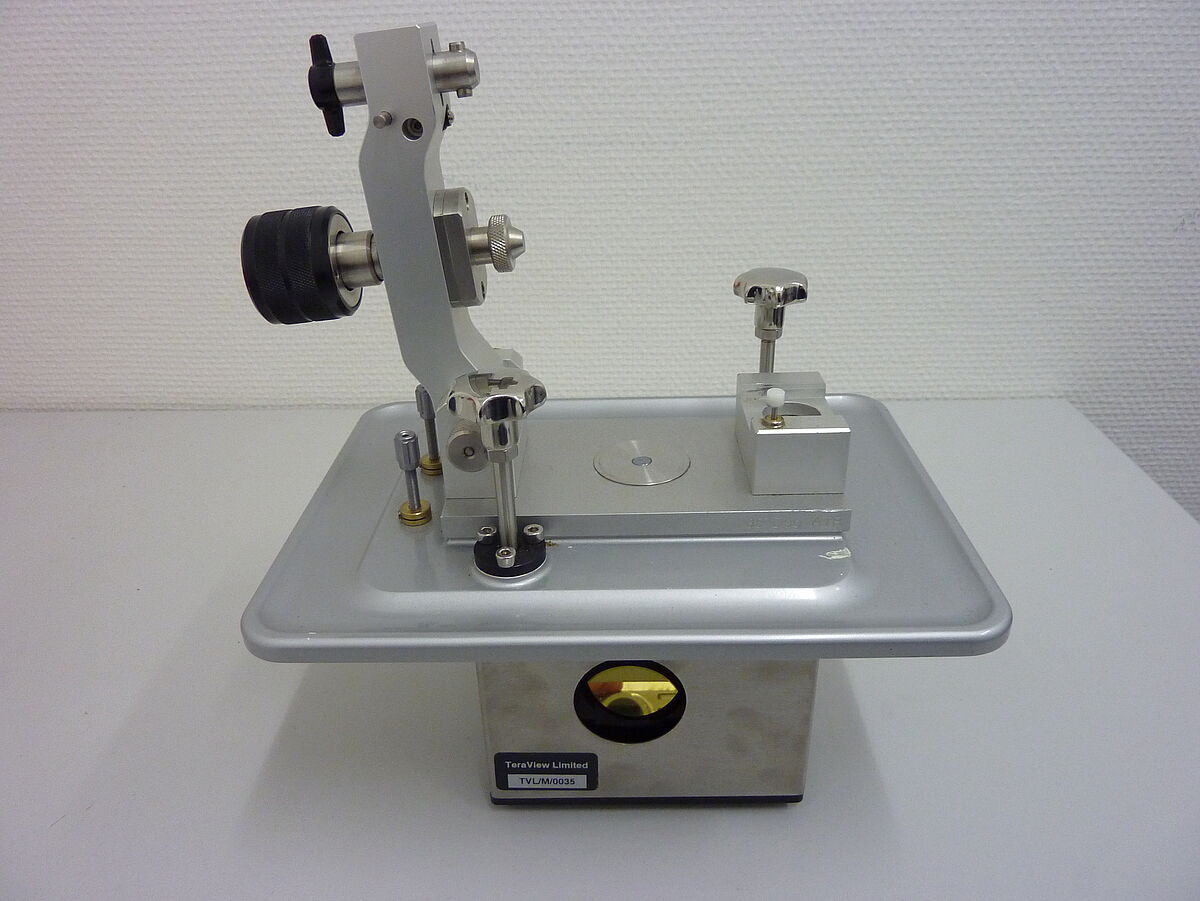Vibrational Spectroscopy
In our group we use vibrational spectroscopy in all its facets. Different FTIR spectrometers, an FT-Raman module as well as a THz spectrometer in conjunction with suitable accessories allow all kinds of studies on liquids, liquid mixtures and solid samples over the whole spectral range from 2 cm-1 (THz) to 12,800 cm-1 (near infrared). Diverse cuvettes and sample holders enable temperature and pressure dependent experiments.
Bruker VECTOR 22
For routine work in the mid infrared (600 – 4,500 cm-1) we’ve been using a reliable Bruker VECTOR 22FTIR spectrometer for quite a long time. It can be equipped with either a DTGS or MCT detector and various accessories like ATR units, low temperature cells or heating jackets for cuvettes.
Bruker VERTEX 70
The Bruker VERTEX 70 high performance FTIR spectrometer allows working in the far infrared (10 – 600 cm-1), mid infrared (400 – 4.500 cm-1) or up to the near infrared (5,800 – 12,800 cm-1) spectral region by exchangeable beam splitters, numerous DTGS and MCT detectors together with suitable light sources.
Bruker VERTEX 70 + RAM II
We use a Bruker RAM II FT-Raman module directly attached to the VERTEX 70 to obtain important additional information on our systems from complementary Raman spectroscopy. A 1064-nm Nd:YAG laser with a maximum power output of 2W serves as excitation source. The LN2 cooled Ge diode detector does also allow long term measurements with a duration of several days.
Bruker VERTEX 80 + Stopped-Flow-Unit
In our lab, we’re also able to perform rapid-scan-FTIR experiments in the mid infrared. This is done with a Bruker VERTEX 80 FTIR spectrometer equipped with a quickly responding MCT detector. The interferometer scanner with gas bearing and a maximum speed of 320kHz allows recording one IR spectrum every 100 ms at a nominal resolution of 2 cm-1. Combined with a stopped-flow unit we can thus study the kinetics of homogeneous reactions. Due to a spectral range extension this instrument can work in the far infrared (30 – 680 cm-1) or near infrared (5,800 – 12,800 cm-1) region, too.
TeraView Ltd. TPS Spectra 3000
The examination of weak intermolecular interactions in the hitherto inaccessible THz gap is possible since 2010 with the commercially availableterahertz spectrometer TPS Spectra 3000manufactured by TeraView Ltd., UK. Radiation in the spectral range from 0.06 – 3 THz (2 – 100 cm-1) is generated by sending 90 fs pulses from a Ti:sapphire laser (800 nm) onto a GaAs semiconductor element which consequently emits defined pulses of THz radiation. After passing the sample these are detected coherently in a similar manner. Samples can be analyzed in transmission or ATR mode.
Imaging-Unit
THz imagingis possible with an imaging unitthat yields a two-dimensional image of samples up to 100 mm x 100 mm in size by non-destructive reflection measurements in XY direction. This way, e.g. defect structures in semiconductors or the degree of homogeneity of the distribution of pharmaceutically active components in matrices like pills can be studied by analyzing their THz signature.
Sample holders, sample forms and cuvettes
For the analysis of liquid samples in transmission we use variable temperature liquid cells by Specac Ltd., UK, with various window materials and path lengths either as demountable or vacuum-tight version.
For measurements over a broad temperature range (-150 – 250 °C) we use the variable temperature cell matching the above mentioned cuvettes. With this, we’re capable of not only analyzing liquids but also solid samples as well. It can be attached to any of our spectrometers.
Characterizing aqueous solutions of biomolecules is possible with an AquaSpec AS 1100 flow-through cell by microbiolytics GmbH, Germany. An exactly defined 7 µm path length together with water insoluble CaF2 windows allow recording spectra of aqueous solutions between 10 °C and 50 °C. These measurement conditions correspond to the natural working conditions of many biomolecules like proteins. With the help of specially designed inlet ports and biocompatible filters it is also possible to analyze sera like blood.
Samples that are not transparent to infrared light can be analyzed by reflectance measurements alternatively. We mainly use the attenuated total reflection (ATR) technique provided by several ATR unit accessories depending on the spectral region of interest.
The very versatile Golden-Gate ATR unit by Specac Ltd. (45° single reflection, diamond crystal) with ZnSe lenses for the mid infrared can be equipped with numerous sampling plates, e.g. a heatable plate from ambient temperature up to 200 °C. Different pressing anvils or a micro-flow-through cell allow the examination of quite different samples (liquids, powders, pellets, fibers, wires). Additionally, a low-temperature plate reaches temperatures from -150 °C to 80 °C.
Pellets for transmission IR spectroscopy can be manufactured on-site with a manual 25-tons pellet press by Specac Ltd. Evacuation of the pressing tools for 10 mm, 13 mm or 20 mm diameter pellets ensures clean sample preparation. Coarse-grained samples can be milled with a sample mill to obtain homogeneous pellets.

